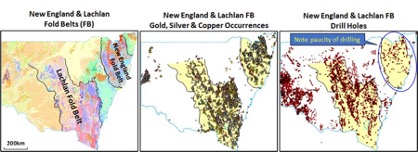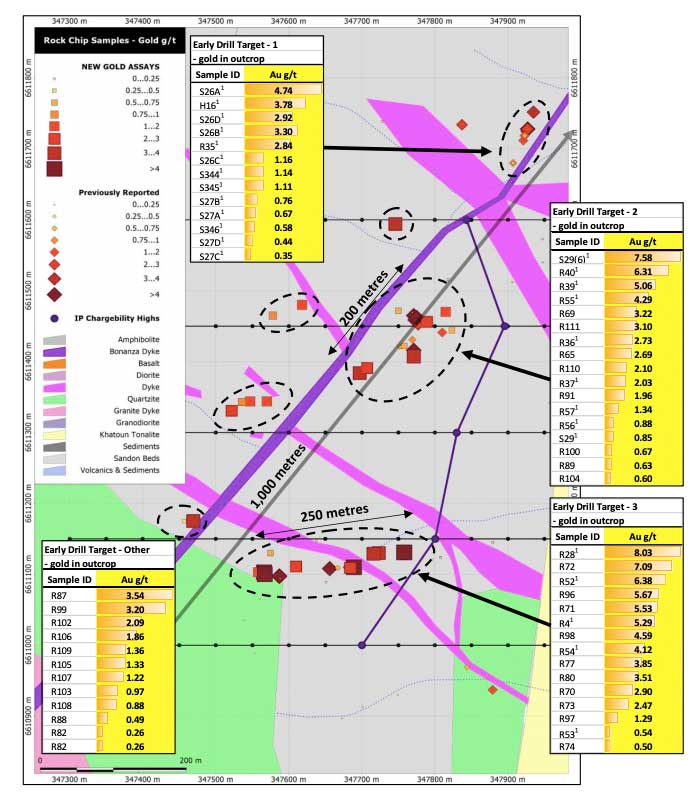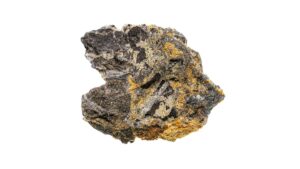Great geological detective work pays off for Lode at Uralla

Pic: John W Banagan / Stone via Getty Images
Lode Resources has made a significant breakthrough in the case of the missing large gold target. Several clues including the discovery of a new style of gold mineralisation indicates the potential for a bulk tonnage gold deposit at its Uralla project.
Newly listed Lode Resources (ASX:LDR) has worked out what previous explorers didn’t – the gold mineralisation at its Uralla project isn’t just restricted to thin quartz veins but also occurs as disseminated high-grade gold in relatively unweathered siltstone.
This significantly increases the chances of outlining a bulk tonnage gold deposit.
The Uralla project sits in the highly prospective, but underexplored New England Fold Belt of NSW. Its current in situ resource value is estimated to be just 2 per cent of the entire state due to a lack of exploration.
Despite historical production of gold, silver and base metals, it has seen very modest drilling compared to the well picked-over Lachlan Fold Belt to the south. The New England Fold Belt has just one exploration hole for every 13 holes drilled in the Lachlan Fold Belt.

But now Lode has discovered disseminated gold mineralisation at the Hudson’s prospect that points to bulk tonnage potential. This was determined from visual observations and petrological study of thin sections which confirmed that this mineralisation can be classified as disseminated.
Multiple rock chip samples that graded above 1 gram per tonne (g/t) gold, with an average grade of 3.47g/t and up to 8.03g/t.

“This is a significant breakthrough and an outstanding piece of geological detective work by our team,” co-founder and managing director Ted Leschke said.
“It highlights that previous explorers on this ground had missed a potentially large gold target.
“The indications that gold mineralisation is not restricted to thin quartz veins as had been previously interpreted by prior explorers suggest that Uralla has potential for bulk tonnage.”
The results came from outcrop that appears to be spatially related to the “Bonanza Dyke” over a strike length of 1,000m. Lode says aeromagnetics reveals that this well-known regional structure extends for several kilometres.
“That the significant gold assays were taken from outcrop that appears to be spatially related to the ‘Bonanza Dyke’ over a strike length of 1,000 metres gives some sense of potential scale,” Leschke said.
“The upcoming drilling now holds heightened significance for Lode and our shareholders, and we look forward to getting the drills turning in the near future.”
The Uralla gold project, which spans 300sqkm, sits within a significant goldfield, which Lode believes hosts Intrusive Related Gold System (IRGS)-style mineralisation.
IRGS deposits can host millions of ounces of gold.
Uralla was one of the earlier goldfields discovered in NSW and a significant gold producer in the 1850s.
Lode’s immediate priority is drilling the Uralla project, which comprises two tenements that almost entirely cover the historic Uralla goldfield. The company has already identified several key targets including at the Hudson’s prospect, which is located on the “Bonanza Dyke” and is the priority for drilling.
Preparations for highly anticipated drilling at the Uralla project are well advanced, with a 3,000m, 15-hole program planned. Initially, drilling will test directly below high-grade gold in surface outcrop and adjacent.
This article was developed in collaboration with Lode Resources, a Stockhead advertiser at the time of publishing.
This article does not constitute financial product advice. You should consider obtaining independent advice before making any financial decisions.
Related Topics

UNLOCK INSIGHTS
Discover the untold stories of emerging ASX stocks.
Daily news and expert analysis, it's free to subscribe.
By proceeding, you confirm you understand that we handle personal information in accordance with our Privacy Policy.








